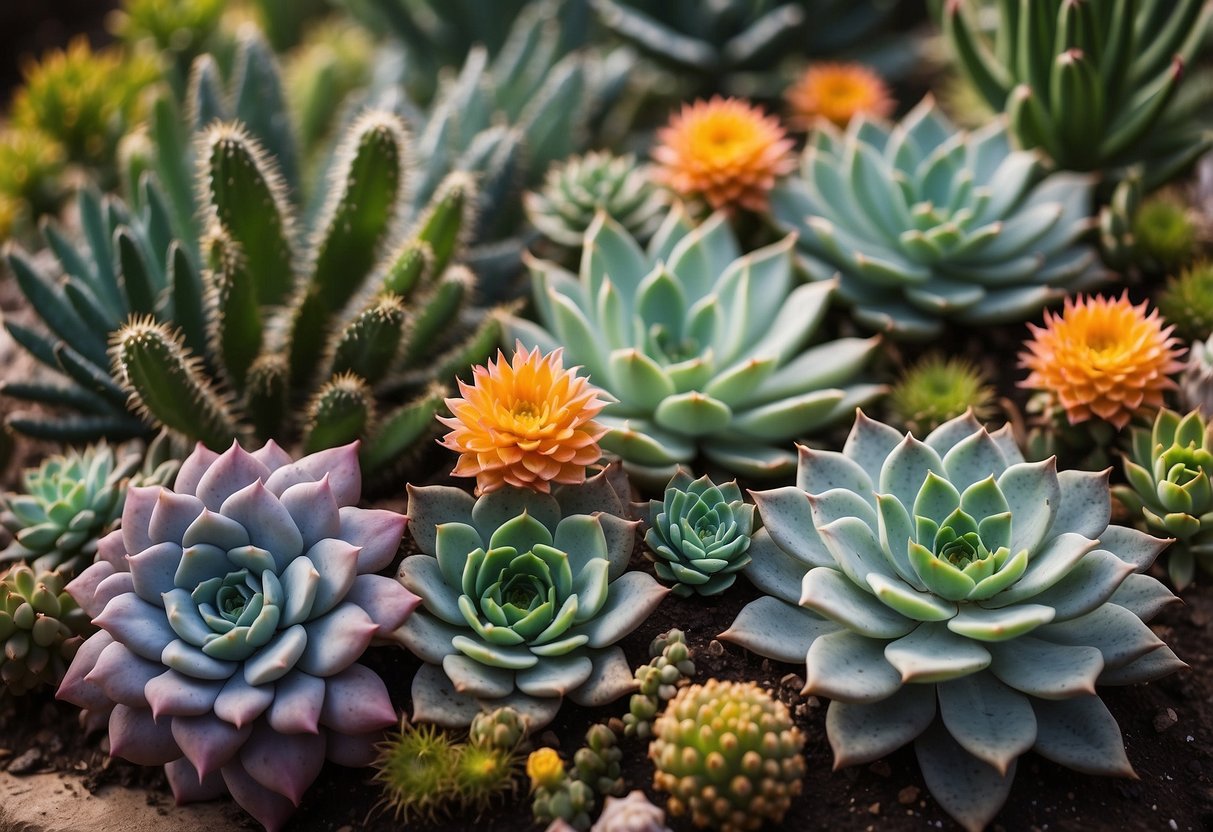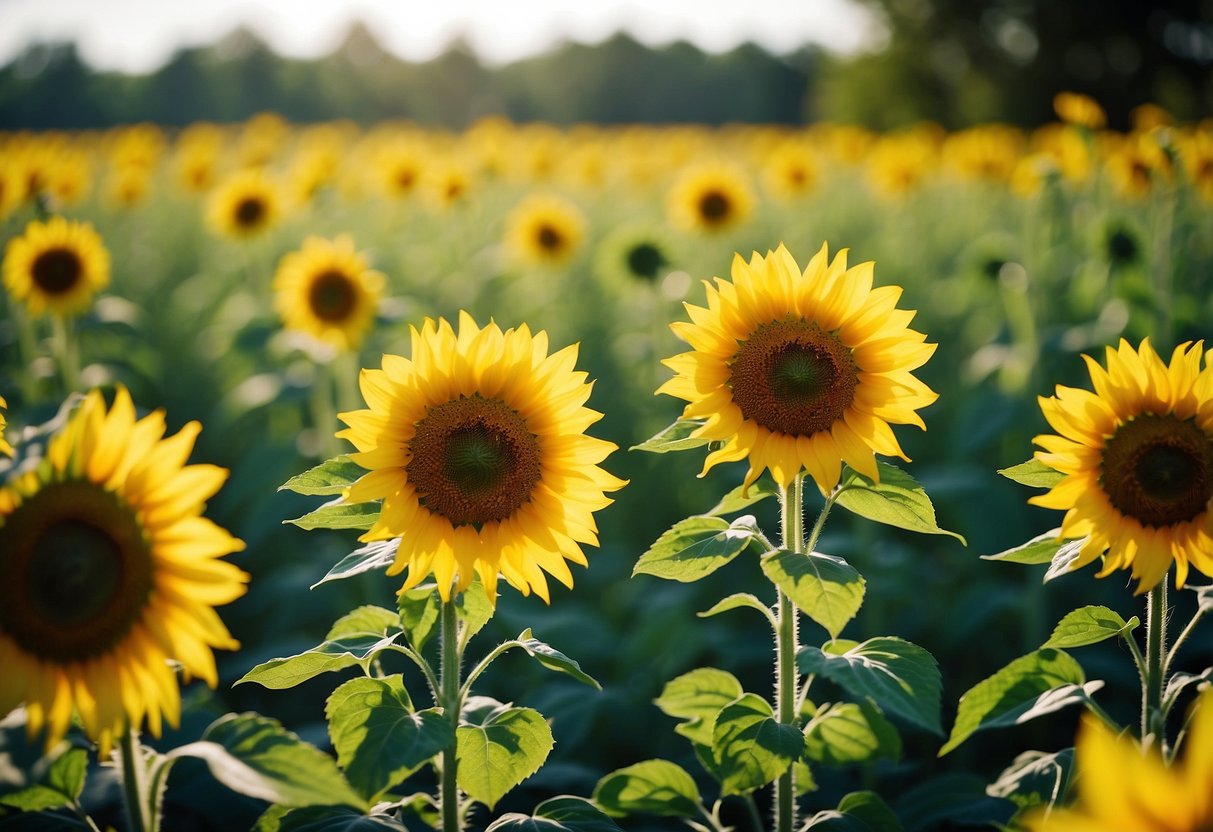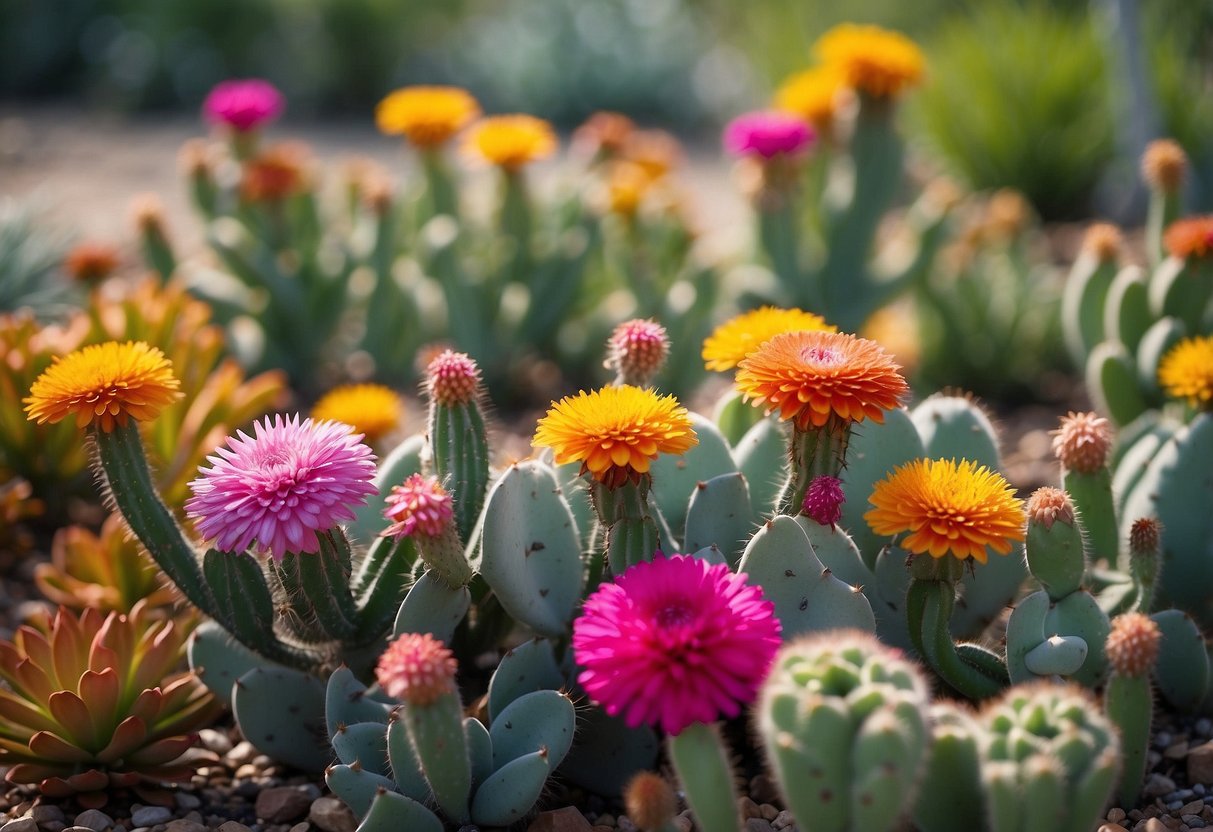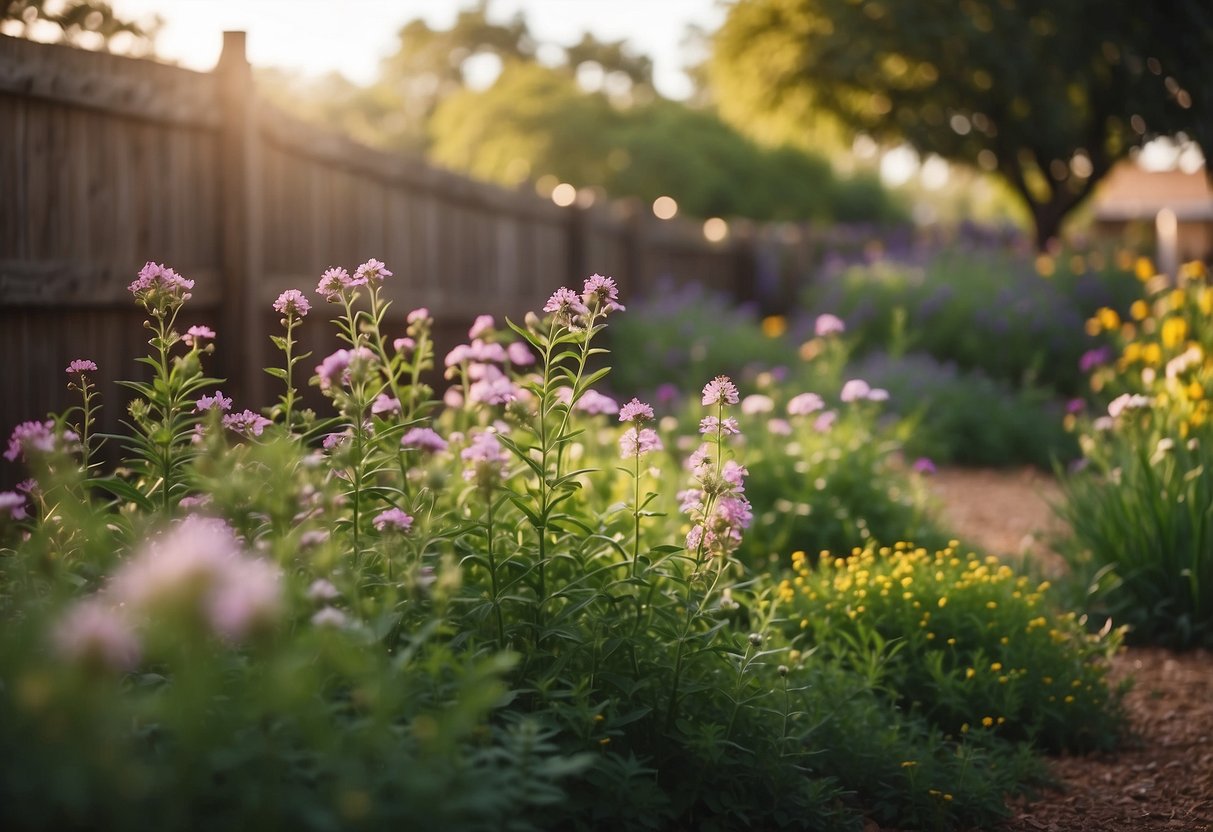Texas Flower Garden Ideas: Brighten Your Yard with Local Blooms
Are you looking to transform your Texas garden into a vibrant, blooming paradise? With the right plant selections, your garden can thrive even in the hot Texas climate.

Discover the best flower garden ideas that are both beautiful and easy to maintain. Whether you’re a gardening novice or a seasoned pro, these ideas will help you create a stunning landscape that reflects the unique beauty of Texas.
1) Bluebonnets and Indian Paintbrush Combo

Adding bluebonnets and Indian paintbrushes to your garden creates a stunning display of reds and blues.
Bluebonnets, Texas’ state flower, thrive in well-drained soil and full sun. They grow easily and spread quickly.
Indian paintbrushes add vibrant red accents. They pair wonderfully with bluebonnets, growing together in fields or garden beds.
For best results, plant them in early fall. This gives them a head start for spring blooming.
2) Cottage-Style Wildflower Garden

Creating a Cottage-Style Wildflower Garden in Texas can be both beautiful and rewarding. You can grow plants like larkspur, coneflowers, and snapdragons that thrive in Texas heat.
To enhance the cottage feel, mix in native Texas wildflowers like yarrow, which is deer-resistant and has lovely ferny foliage. Adding ornamental grasses can provide texture and movement to your garden.
Consider using wildflower seeds to create patches of color. This method is easy and brings in pollinators, making your garden a vibrant, buzzing ecosystem. For more information, check out this guide.
3) Succulent and Cactus Corner

Creating a Succulent and Cactus Corner in your Texas garden can add a touch of desert charm. These plants are perfect for hot, dry climates.
Mix different shapes and sizes to make the area look more interesting. Add some decorative items, like glass balls or seashell planters, to give your garden a unique touch.
Make sure to use well-draining soil to keep your succulents and cacti healthy. A variety of rocks can enhance the look and help with drainage. Visit trees.com for more ideas.
4) Butterfly-Attracting Milkweed Bed

Creating a butterfly-attracting milkweed bed is a wonderful way to invite butterflies into your Texas garden. Milkweed is essential for Monarch butterflies and is a charming addition to any garden.
Plant your milkweed in an area that gets full sun. You can choose different types of milkweed, like tropical or swamp milkweed, to add variety.
Make sure the soil is well-drained. During especially hot afternoons, some light shade can help the plants thrive. Milkweed not only supports Monarchs, but its bright flowers will also beautify your garden all season long.
5) Native Texan Perennials

Adding native Texan perennials to your garden is a great idea. They are well-suited to Texas’s varied climate and soil types.
Consider the Texas Bluebonnet. This state flower has beautiful blue blooms and loves full sun.
Another lovely choice is the Purple Coneflower. These flowers attract butterflies and thrive in sunny spots.
The Black Prairie Clover has small pinkish blooms and attracts bees. It grows well in Texas gardens.
Adding these perennials ensures your garden stays colorful and lively.
6) Low-Maintenance Rock Garden

A low-maintenance rock garden is perfect for your Texas flower garden.
Choose hardy plants like society garlic that thrive in full sun and well-drained soil. They add beauty without much effort.
Consider decorative rocks and succulents to complement the plants. This setup will save you time on watering and weeding.
For inspiration, check out these rock garden plants that work well in poor soil. Your garden can look great with minimal upkeep!
7) Roses and Bluebonnets Mix

Mixing roses with Texas Bluebonnets creates a beautiful display in your garden. The bright red of the roses contrasts nicely with the vibrant blue and purple of the bluebonnets.
Roses need well-draining soil and plenty of sunlight, just like bluebonnets.
Be sure to give both plants enough space so they don’t compete for nutrients and water.
8) Shady Fern and Hostas Haven

For a cool, serene spot in your garden, consider pairing ferns and hostas. These shade-loving plants thrive together and create a lush, green retreat.
Hostas come in many colors and sizes. You can mix blue-leaved hostas with silver-fronded ferns for a striking look.
Adding variegated hostas with solid-colored ferns adds depth and interest. This combination makes your shady garden area feel vibrant and alive.
9) Drought-Tolerant Purple Sage

Purple Sage, also known as Texas Sage, is a beautiful addition to your garden. Its silver-gray leaves and purple flowers provide a vibrant splash of color.
This plant thrives in harsh conditions. It handles drought, rocky soil, and intense heat well. You can count on Purple Sage to brighten your landscape during dry spells.
For more details on how to grow and care for Texas Sage, visit Better Homes & Gardens.
10) Sunny Sunflower Patch

A sunny sunflower patch can brighten up any garden. These tall, cheerful flowers are easy to grow and maintain. You’ll find varieties from small dwarfs to giants over six feet tall.
Plant sunflowers where they get full sun. They thrive best in a sunny spot with well-drained soil. Water them regularly, especially during hot Texas summers.
For a visit, head to places like P-6 Farms or Wildseed Farms. These spots offer beautiful sunflower fields perfect for inspiration.
Choosing the Right Flowers for Your Texas Garden

Selecting the right flowers for a Texas garden involves understanding the climate and choosing between native and non-native plants to ensure success. Your choices can make your garden both vibrant and easier to maintain.
Climate Considerations
Texas weather varies a lot, so it’s important to know what flowers can handle the conditions where you live. Texas has different hardiness zones, from 6a in the north to 10a in the south.
In areas with colder winters, plants need to be frost-resistant. For example, the petunia wilts and dies if the temperature drops below 35°F. In zones 7a and 7b, which have moderate winters, you have more flexibility with planting times.
Hotter areas, especially central and southern Texas, need heat-tolerant flowers. Turk’s cap, for example, thrives in high temperatures and provides long-lasting color with its bright red flowers.
Native vs. Non-Native Plants
Native plants are usually better suited to Texas because they’ve adapted to the local environment. They’re easier to take care of and often require less water and fewer chemicals.
Plants like wildflowers and other local species can create a sustainable garden. They help attract native wildlife, such as bees and butterflies, boosting the local ecosystem.
Non-native plants, though tempting for their exotic looks, need more care. They might not handle Texas weather well and could require more water, special soil, or protection from pests. When considering non-native options, make sure they are hardy enough for your specific region.
Mixing native and non-native plants can balance aesthetics with practicality, giving your garden a unique yet manageable appeal.
Creating a Year-Round Blooming Garden

Creating a year-round blooming garden in Texas means selecting the right plants for each season and knowing when to plant them. Focus on choosing a mix of perennials and annuals that thrive in different times of the year to ensure continuous color and life.
Seasonal Planting Guide
Spring: Start with bulbs like daffodils and tulips, which bring bright colors early in the season. Add perennials like irises and daylilies, which bloom later in spring.
Summer: Opt for heat-tolerant plants like marigolds and zinnias. Perennials such as Black-eyed Susans and coneflowers add cheerful colors and can handle the Texas summer heat.
Fall: Plant chrysanthemums and asters for autumn blooms. Consider foliage plants like Japanese maples, which provide rich colors as leaves change.
Winter: Use pansies and ornamental cabbages for winter color. In milder parts of Texas, you can also plant kale and cyclamen that withstand cooler temperatures.
Perennials and Annuals
Perennials: For a low-maintenance garden, choose plants like daylilies, which bloom repeatedly. Black-eyed Susans and coneflowers are also great choices, thriving in Texas’s warm climate. They provide long-lasting color and attract pollinators.
Annuals: Add marigolds and zinnias for vibrant summer displays. These annuals are perfect for filling in spaces and can be easily changed out each year to refresh your garden’s look.
By including both perennials and annuals, you ensure that your garden remains lively and colorful throughout the year. This balance allows for seasonal variety and maintains a fresh appearance as different flowers bloom.
Sustainable Gardening Practices

Creating a sustainable garden in Texas involves focusing on water conservation and soil health. These practices not only preserve resources but also improve plant growth and garden resilience.
Water Conservation Tips
Water is a precious resource, especially in Texas. Efficient use of water can help your garden thrive even during dry spells. Mulching is effective, where you apply organic materials like wood chips or straw around plants to retain moisture and keep soil cool. Collecting rainwater using barrels or large containers captures natural precipitation. This reduces dependence on tap water and ensures a steady supply during droughts.
In addition, using drip irrigation systems delivers water directly to the plant roots with minimal waste. These systems can be automated with timers for convenience. Choosing native plants is another smart strategy, as they are adapted to local climate conditions and require less water than exotic species.
Soil Health and Maintenance
Healthy soil is the foundation of a sustainable garden. Composting is a powerful way to enrich the soil. It recycles kitchen scraps and yard waste into nutrient-rich compost, which improves soil structure and fertility. Start by creating a compost pile with a mix of green materials (like vegetable scraps) and brown materials (like leaves).
Mulching not only conserves water but also enhances soil quality as the mulch decomposes. Keeping soil covered with mulch helps control weeds and prevents erosion. Crop rotation is another essential practice. Rotating different plant types in your garden beds each season can reduce pest buildup, improve soil nutrients, and increase yields.
To improve soil drainage, especially in areas where water pools, consider using raised beds. These beds allow for better control over soil quality and water drainage, providing ideal conditions for plant roots.







